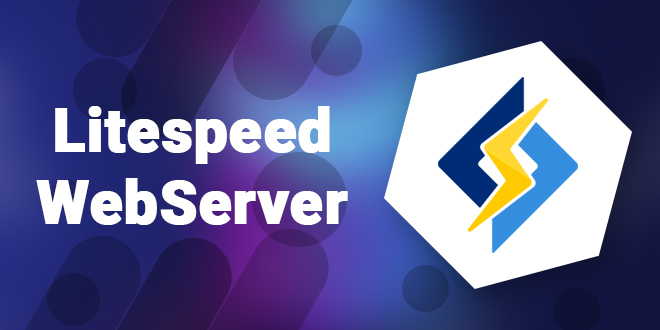10 Essential LiteSpeed Questions with Answers and Explanations
 Suraj Pokhrel
Suraj Pokhrel
LiteSpeed Web Server (LSWS) is a high-performance alternative to Apache, offering enhanced speed, security, and optimization features. If you’re using or planning to use LiteSpeed, understanding its capabilities can help you maximize its benefits. Below are 10 important questions related to LiteSpeed, complete with answers and detailed explanations.
1. Which of the following platforms does LiteSpeed provide brute protection capabilities for?
Options:
cPanel
Drupal
WordPress ✅
Magento
Explanation: LiteSpeed provides brute-force protection primarily for WordPress through its LiteSpeed Cache plugin. This feature helps prevent unauthorized login attempts by limiting repeated failed login attempts, blocking abusive IPs, and integrating with reCAPTCHA.
2. For which web server software options does LiteSpeed work as a drop-in replacement?
Options:
WordPress
Nginx
Apache ✅
IIS
Explanation: LiteSpeed Web Server is designed as a drop-in replacement for Apache. It is fully compatible with Apache’s configuration files, including .htaccess, mod_rewrite, and mod_security, allowing for an easy switch without major configuration changes.
3. Which of the following statements most accurately describes LSPHP’s support for Opcode Caching?
Options:
LSPHP does not support Opcode Caching.
LSPHP supports Opcode Caching, but only within the Worker and ProcessGroup modes.
LSPHP supports Opcode Caching, but only within the Daemon and ProcessGroup modes.
LSPHP supports Opcode Caching within all three suExec modes. ✅
Explanation: LSPHP allows Opcode Caching (e.g., OPcache) in Worker Mode, Daemon Mode, and ProcessGroup Mode. This caching mechanism improves PHP performance by storing precompiled script code in shared memory, reducing execution time for repeated requests.
4. Which of the following statements most accurately describes the primary requirement for QUIC to function successfully on your server?
Options:
You must ensure that port 911 on UDP is allowed in and out through the firewall.
You must ensure that port 443 on UDP is allowed in and out through the firewall. ✅
You must ensure that port 443 on TCP is allowed in and out through the firewall.
You must ensure that port 911 on TCP is allowed in and out through the firewall.
Explanation: QUIC (Quick UDP Internet Connections) is a transport protocol that operates over UDP port 443. It enhances web performance by reducing connection latency and improving reliability. To enable QUIC, UDP traffic on port 443 must be allowed through the firewall.
5. Which of the following statements best describes LiteSpeed’s support for reCAPTCHA?
Options:
LiteSpeed supports the use of reCAPTCHA. ✅
LiteSpeed does not support the use of reCAPTCHA.
LiteSpeed only supports the use of CAPTCHA, not reCAPTCHA.
LiteSpeed only supports the use of reCAPTCHA when installing with reDIS.
Explanation: LiteSpeed fully supports Google reCAPTCHA, which helps prevent spam, brute-force attacks, and unauthorized access attempts. This feature is integrated into LiteSpeed’s security tools and can be applied to login forms and other authentication mechanisms.
6. Which of the following types of architectures does LiteSpeed utilize?
Options:
Event-driven Architecture ✅
Bovine-driven Architecture
Process-driven Architecture
Beer-driven Architecture
Explanation: LiteSpeed Web Server uses an event-driven architecture, allowing it to efficiently handle thousands of concurrent connections with minimal resource usage. Unlike process-driven models like Apache’s prefork MPM, event-driven architecture ensures better performance and scalability.
7. For which of these systems does LiteSpeed NOT offer an official LSCache plugin?
Options:
Joomla
OctoberCMS ✅
Magento
WordPress
Explanation: LiteSpeed provides official LSCache plugins for platforms such as WordPress, Joomla, and Magento. However, OctoberCMS does not have an official LSCache plugin, meaning users must rely on alternative caching solutions.
8. Which Apache rewrite flags work slightly differently when using LiteSpeed, as opposed to Apache?
Options:
The [R] (redirect) flag.
The [L] (last) flag.
The [E] (environment) flag. ✅
The [F] (forbidden) flag.
Explanation: LiteSpeed handles the [E] (environment) flag differently compared to Apache. While Apache allows environment variables to be passed to CGI and other applications seamlessly, LiteSpeed may have limitations in recognizing or applying certain environment variables.
9. Which of the following statements most accurately describes LSPHP’s PHP version support?
Options:
LSPHP supports the use of only one PHP version at any given time.
LSPHP supports the use of different PHP versions per-account, within a web server’s global configuration.
LSPHP supports the use of different PHP versions per-directory, within an account’s file structure. ✅
LSPHP supports the use of different PHP versions per-server, within a server’s cluster configuration.
Explanation: LiteSpeed allows per-directory PHP version selection, meaning users can assign different PHP versions to specific directories. This is useful for hosting multiple applications with varying PHP requirements within a single account.
10. Which of the following options most accurately indicates the primary reason that ModSecurity experiences a significant performance boost when used with LiteSpeed?
Options:
ModSecurity in LiteSpeed only processes rules based on a pre-defined set of scheduled hours based on office availability.
ModSecurity in LiteSpeed only processes rules for dynamic requests, not static. ✅
ModSecurity in LiteSpeed only processes rules for static requests, not dynamic.
ModSecurity in LiteSpeed only processes rules based on a pre-defined series of motivational quotes and excerpts, improving server morale.
Explanation: ModSecurity in LiteSpeed is optimized to process rules only for dynamic requests (e.g., PHP scripts, API calls), whereas static content (e.g., images, CSS, JavaScript) is bypassed. This selective filtering significantly reduces overhead and improves performance compared to Apache.
Final Thoughts
LiteSpeed Web Server is a powerful, high-performance alternative to Apache with enhanced security, event-driven architecture, and optimized caching. Understanding how LiteSpeed differs from traditional web servers helps administrators make informed decisions for better performance, security, and scalabili
Subscribe to my newsletter
Read articles from Suraj Pokhrel directly inside your inbox. Subscribe to the newsletter, and don't miss out.
Written by
